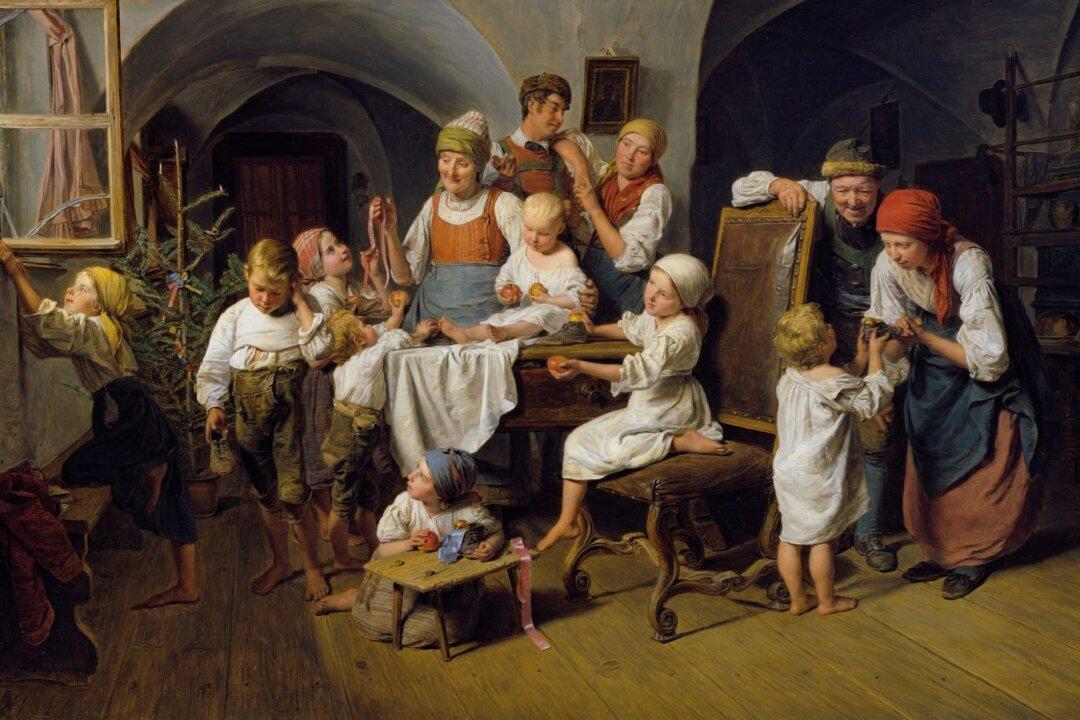In the painting “Christmas Morning,” a humble Austrian family gathers together while the children discover their modest presents. In Austrian tradition, children put their shoes on the windowsill in hopes that St. Nicholas will leave them simple gifts if they’ve been good. A realist painter, Ferdinand Georg Waldmüller shows us an intimate family scene.
Waldmüller (1793–1865), was one of the most influential Austrian painters of the 19th-century Biedermeier style. The Biedermeier style emerged in Central Europe between 1815 and 1848 to cater to the growing middle class; artists depicted common people, and themes of harmony and piety.





